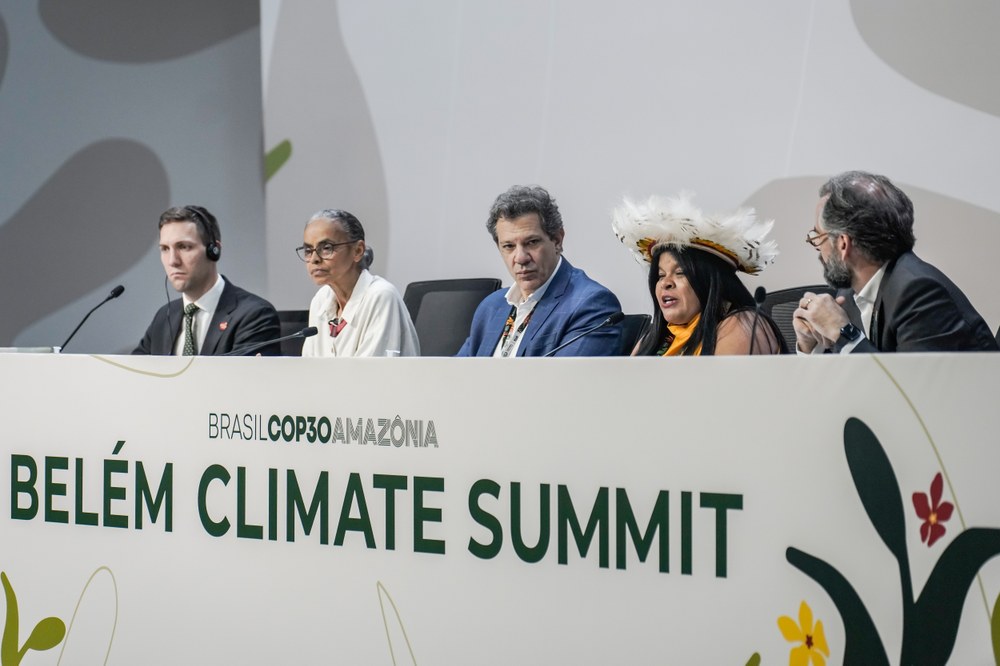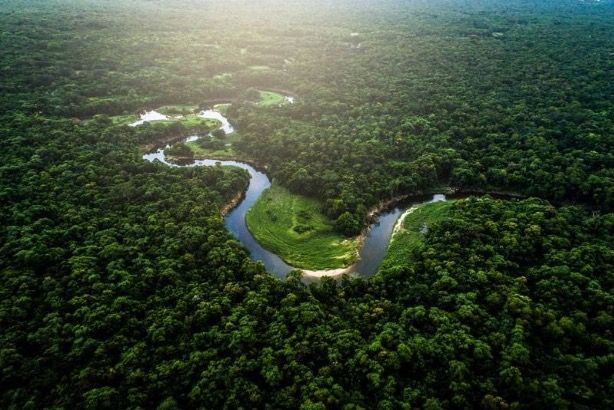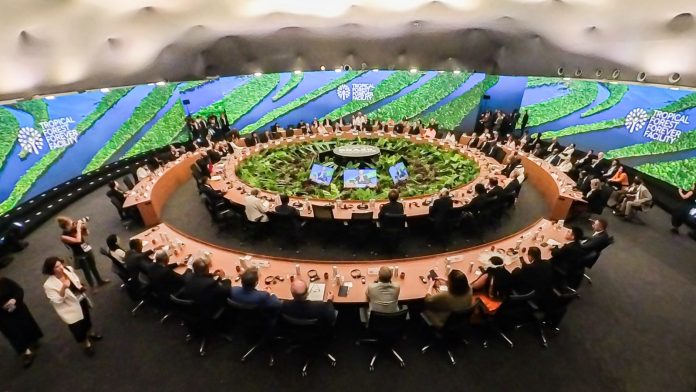Brazil’s announcement at COP30 this past week (November 6) of the Tropical Forests Forever Facility (TFFF), during COP30 Leaders summit attended by leaders from over 30 countries, has drawn guarded approval from conservationists and raised urgent questions for African forest nations: who will receive the money, how will it reach frontline custodians, and what will it mean in practice for the Congo Basin’s beleaguered ecosystems?
The TFFF, shepherded by Brazil with the World Bank as interim host, is an endowment-style mechanism intended to invest pledged capital in fixed-income assets and use returns to pay countries and communities for keeping tropical forests standing. Initial pledges top roughly $5.5 billion, with an ultimate fundraising ambition of $125 billion and headline contributions from Norway ($3 billion), Brazil ($1 billion) and Indonesia ($1 billion).
The facility sets aside at least 20 percent of payments for Indigenous peoples and local communities and is pitched as a structural fix to a market that has historically valued extracted goods over intact ecosystem services.

President Lula da Silva proudly opened proceedings and noted: “The Tropical Forest Forever Facility we are launching today is an unprecedented initiative. For the first time in history, countries of the Global South will take a leading role in a forest agenda”. He complemented: “The Tropical Forest Forever Facility will be one of the main tangible outcomes in the spirit of COP30 implementation. It is symbolic that the celebration of its birth is taking place here in Belém, surrounded by sumaúmas, açaí palms, andirobas, and jacarandás. In just a few years, we will begin to see the fruits of this fund. We will take pride in remembering that it was in the heart of the Amazon rainforest that we took this step together”.
For Africa, where the Congo Basin contains the continent’s largest share of tropical forest and is central to global biodiversity and carbon budgets, the significance of a multibillion-dollar, predictable payment stream is both clear and complex. The Congo Basin spans some 500 million acres across six countries and accounts for more than 70 percent of Africa’s tropical forest cover, hosting critical carbon sinks and species found nowhere else.
However, forest loss in parts of the region has accelerated: the Democratic Republic of the Congo (DRC) alone lost more than half a million hectares of primary forest in 2022, and recent data point to continued high rates of loss into 2024. Those trends underline the scale of what effective conservation finance would need to cover.

Practically speaking, the TFFF’s promise to convert standing forest into a predictable revenue flow changes the incentive architecture confronting countries such as DRC, Republic of the Congo, Gabon, Cameroon, Central African Republic and Equatorial Guinea. If the fund operates on the model outlined, investing capital and distributing returns, recipient governments could receive multi-year payouts tied to verified forest integrity rather than one-off project grants.
For a country like Gabon, which has historically maintained comparatively low rates of forest loss and already captures revenue from timber and oil, a stable conservation dividend could offset the macroeconomic pressure to expand extractive industries. For the DRC, where smallholder agriculture, artisanal mining and weak governance together drive most forest conversion, finance arriving as long-term, conditional transfers could fund community-based land tenure regularization, scaling of low-emission agricultural practices, and enforcement of protected-area management, if those payments reach the right actors.
However, translating capital pledges into on-the-ground impact requires confronting three practical bottlenecks that have beleaguered prior forest funds: transparent governance of disbursed resources, capacity for rapid and credible verification, and direct transfer mechanisms to community-level stewards.
Civil society voices at COP30 were explicit about these pitfalls. Advocates warn against a centralized pipeline that routes money through national treasuries without safeguards, pointing to historical delays and leakage where funds intended for frontline guardians never left capitals. Indigenous organizations welcomed the 20 percent carve-out for local communities as recognition of their custodianship but stressed that a line-item alone does not guarantee timely, accountable flows to territories where customary tenure is unsettled.
Verification and performance measurement will be equally decisive. The TFFF model proposes payments tied to verified conservation outcomes and discounts for forest loss, which presupposes robust, near-real-time remote sensing and national monitoring capacities.
Global Forest Watch and other systems can detect canopy loss at scale, but translating satellite alerts into legally defensible performance claims, particularly where smallholder clearing is widespread, will require investment in ground truthing, inclusive participatory monitoring and institutional coordination. Without those capacities, the fund risks rewarding headline-level forest retention while missing localized drivers of degradation that, if left unchecked, will erode long-term carbon and biodiversity outcomes.
There is also a strategic question about what the money should buy. In most African forest states, maintaining standing forest is inseparable from managing competing commercial pressures: cattle ranching and soy in South America; oil and mining interests in parts of Africa. Redirecting those economic incentives at scale means not only compensating for foregone extractive rent but creating viable alternatives, payments for ecosystem services will have to be complemented by support for sustainable supply chains, fiscal reforms that reduce dependency on resource extraction, and private-sector engagement that shifts investment away from clearance-driven projects.
The TFFF’s architects argue that an endowment capable of delivering predictable returns can help make conservation a more profitable path. Whether governments and investors align fiscal policy, land-use planning and private finance behind that idea will determine the fund’s leverage.
On procedural safeguards, the World Bank’s interim trusteeship offers a familiar architecture for fiduciary control and investor confidence, but it also raises the political sensitivity flagged by Indigenous leaders who contend that stewardship decisions are best governed by local institutions rather than distant intermediaries.
COP30’s, initial donors, especially Norway’s large pledge, create momentum, but scaling to the $125 billion target demands a greatly expanded investor base and rapid operationalization both technically challenging and politically fraught. The choice of national jurisdictions for the Tropical Forest Investment Fund (TFIF) and rules for access will shape who benefits and how quickly funds hit the ground.
Engage with us on LinkedIn: Africa Sustainability Matters





